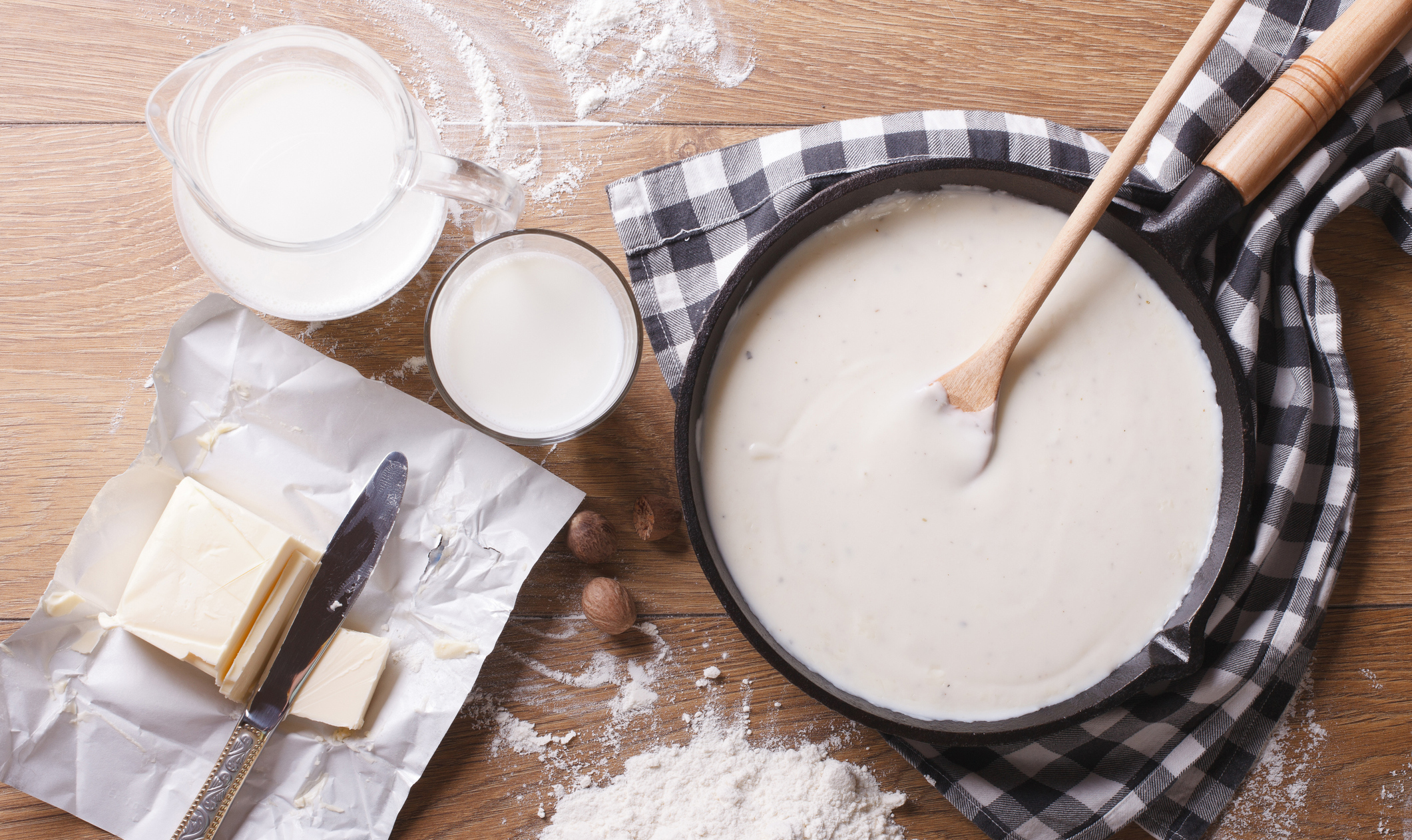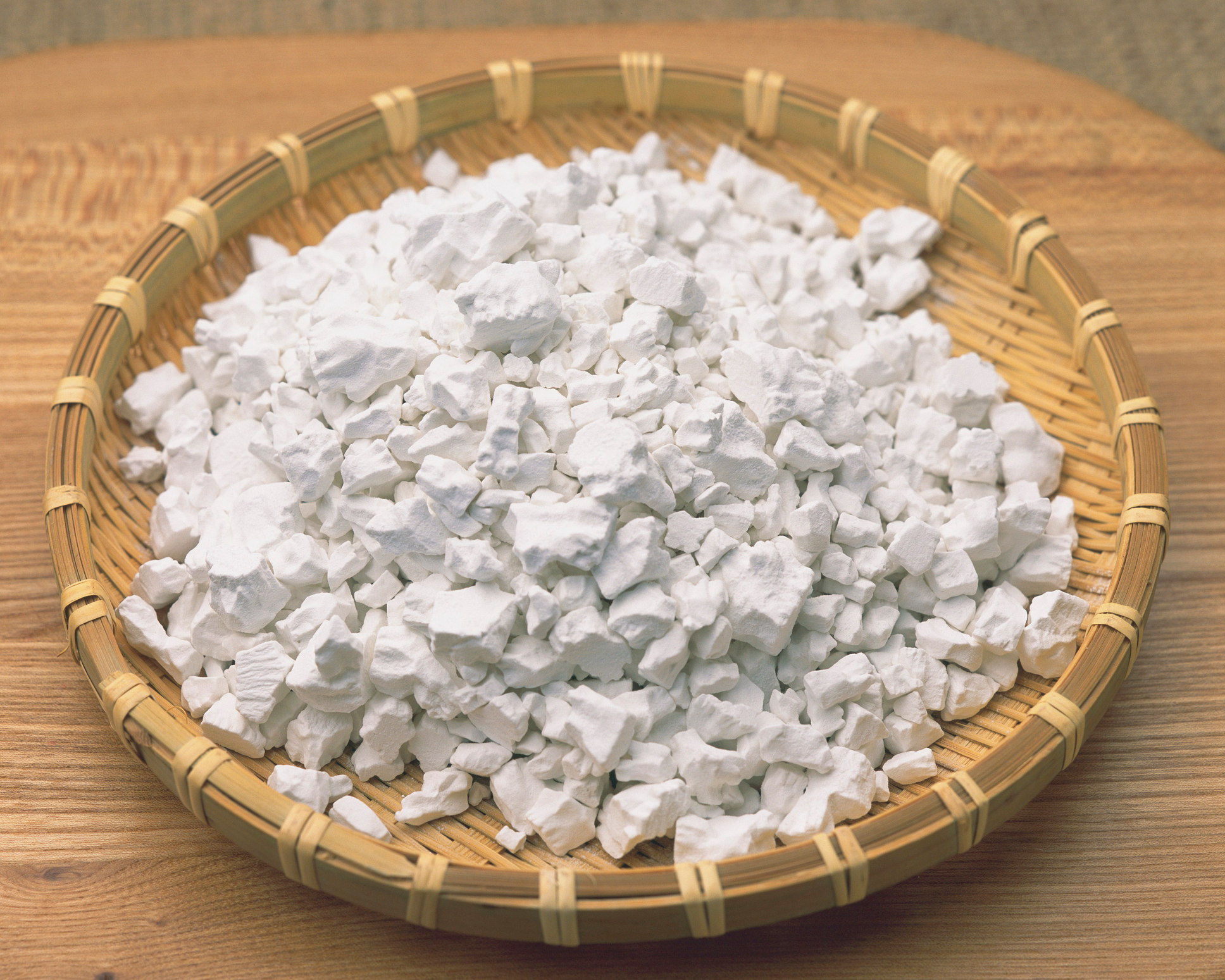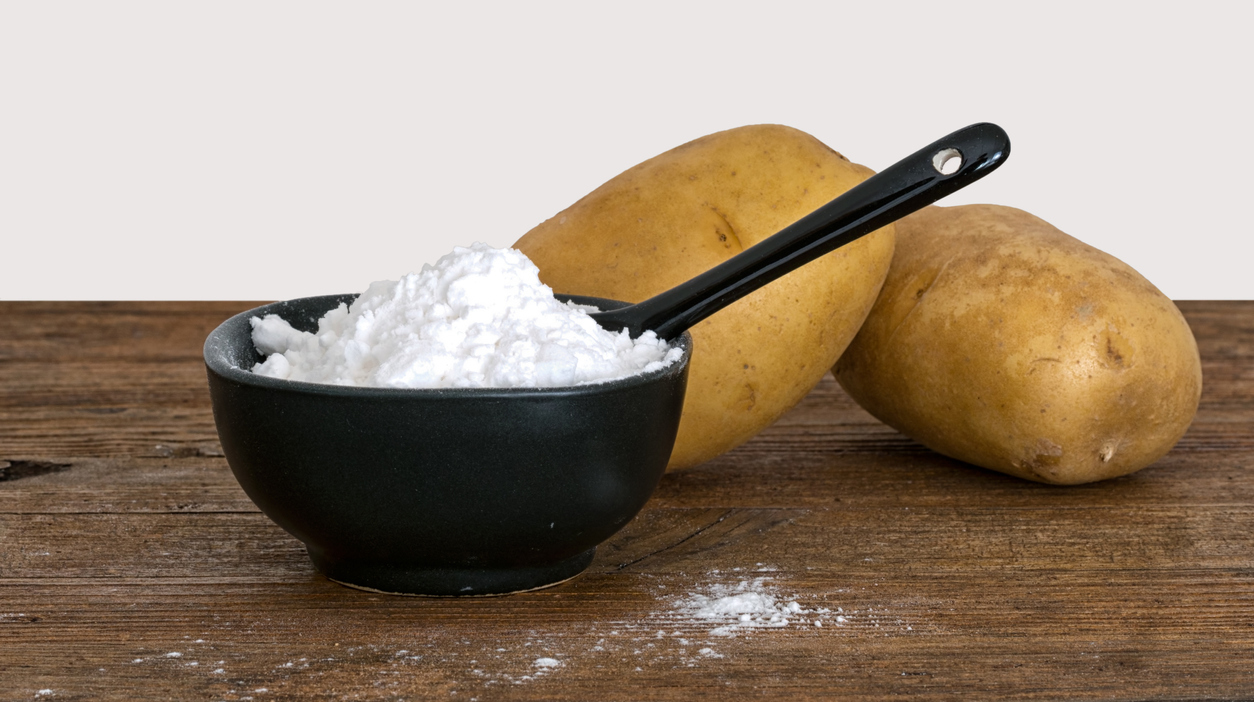How To Thicken Soups, Stews, And Sauces For Stick-To-Your-Ribs Purposes
Deliciousness is not just how a dish looks, but how it feels. It's the tactile and textural pleasures. And being that we're in the midst of soup and stew season, there's nothing more disappointing than digging in with your spoon and discovering a thin, watery bowl. Think about it: Chicken pot pie with runny juices would be not nearly as appetizing as chicken pot pie with a thick, creamy sauce that holds the filling together.
Thing is, there are various tactics to make dishes more luscious, and it really depends on your particular situation. I've known friends who merely dumped a few spoonfuls of flour into their thin soups—to disastrous results.
Bring me your watery, your weak, your wimpy sauces. I will fix them and all will be well. Below are some of the most common thickening agents, ones that can add body, mouthfeel, and lusciousness to even the most slackened of sauces, soups, and stews.
Beurre manié
A beurre manié, which translates to "kneaded butter" in French, consists of equal parts butter and flour mashed together. The fat coats the flour molecules, allowing them to release slowly and evenly into a hot liquid. It is a useful trick for any cooked dish where a slight butter flavor would be welcomed. I feel like a real cook when I make a beurre manié to thicken a dish, most commonly pan sauces or chicken/beef stew.
The downside: It has a certain je ne c'est quoi—that quoi is lump potential. If you don't mash it into a cohesive paste, it will form small flour lumps in your sauce. Mash well and thoroughly—always with a fork—or your next stop is Clump Town.
Corn starch
Corn starch is used in hot dishes in the form of a slurry, usually equal parts corn starch and a liquid (water or broth) whisked together. It should not be sprinkled directly into liquid, as it will form lumps. You can use cold or warm water to make your slurry, as the idea is to distribute it thoroughly. The key when dumping the slurry is then to bring your soup/stew/sauce to a boil, which activates the thickening properties.
Corn starch also lends a coagulation that suits Asian sauces, suspending the flavorful molecules of soy, ginger or vinegar in a gel-like consistency. Or it can be used for "velveting" thinly sliced meat before stir-frying. Corn starch adds a silky texture to the meat and helps sauce cling to it—I really believe why Chinese takeout feels different than most home-cooked Chinese recipes is that appealing slithery texture, and corn starch has much to do with this. (You'll find it in Martin Yan's All-Purpose Stir Fry Sauce.)
Corn starch is also incredibly versatile: As a dredge for fried chicken, it adds a crunch and crackle that flour can't replicate. You can also replace a portion of flour for corn starch for sturdier pie crusts and tart shells.
Corn starch has no flavor, though I find too much can add a too-slippery mouthfeel—think of a thick hot and sour soup. In its sweeter applications, corn starch is used to gel the fruit juices in pies, thicken fillings, and add structure to mousses. There exists among some pie makers some scorn for using corn starch to thicken pudding and custards, but I say as long the base flavor is intact and the end result is not rubbery, you go with your bad corn self.
Arrowroot
Arrowroot is derived from the rhizomes of a tropical plant called maranta arundinacea. It thickens the way corn starch does, except arrowroot can be sprinkled directly into a dish and stirred. Arrowroot is used frequently in gluten-free and paleo cooking/baking. Arrowroot offers alleged health benefits too, as it contains B vitamins and minerals and is noted to be easily digestible. I have nothing against arrowroot, it's just not that common in standard cooking and baking recipes. It's rare that I find it lurking on my friend's shelves either, but perhaps I should be friends with more health-conscious, Goop-reading folks.
Masa
Masa is dried fine cornmeal, often used to thicken chili or soups with a Tex-Mex slant (it's terrific incorporated into chicken tortilla soup). Masa can be used anywhere a mild corn flavor would be fitting. Masa should be added to a long-cooking dish and simmered to release its thickening powers. Beware of under-cooking it, or suffer the effects of tiny gritty corn bits in your teeth. It's worth having in your pantry for these uses, but also so you can throw together homemade tortillas quickly.
Potato starch
Potato starch is washed out of potatoes, collected, and dried. It can be substituted for corn starch in most recipes. Called "katakuriko" in Japanese, it's often used to coat chicken before frying as karaage, which creates an extra crispy thin coating of crust. (Funny enough, there is also a reference to using starchy potato water to stiffen the collars of men's shirt in Ireland, before spray starch was readily available.)
I love using potato starch: I add it to vegetable stock to add silkiness without the aftertaste. And as an avid cook of Japanese food, I happen to have potato starch in my pantry. It's less well known as a thickener, so I wouldn't go out of my to buy a bag of it if I had corn starch on hand, as the result is the same in hot liquid dishes.


